Abstract
Four groups of cadmium-exposed persons, from different workplaces and with different types of exposure, have been followed for periods of 9-20 years. In one group the total observation time is over 30 years, since they were included in Friberg's original study. The studies include determination of inulin or creatinine clearance, protein excretion and specific indicators of renal tubular dysfunction. The results indicate that once tubular dysfunction is established, it is irreversible, even when it is minor. In some persons it was noted that the development of renal dysfunction seemed to be a multistage process. The initial stage is characterized by an increased excretion of low molecular weight proteins like beta 2-microglobulin and ribonuclease. After a period of several years with no or low exposure, there was a relatively sharp increase in excretion of total proteins and albumin and a decrease in glomerular filtration rate. This is interpreted as being the result of further increases in renal concentration of cadmium and in spread of cadmium along the tubules. Metallothionein absorption in the tubules, its catabolism and synthesis must play an important role for the development and progress of the tubular dysfunction. It was not possible to show that a decrease in glomerular filtration rate occurs before low molecular weight proteinuria.
Full text
PDF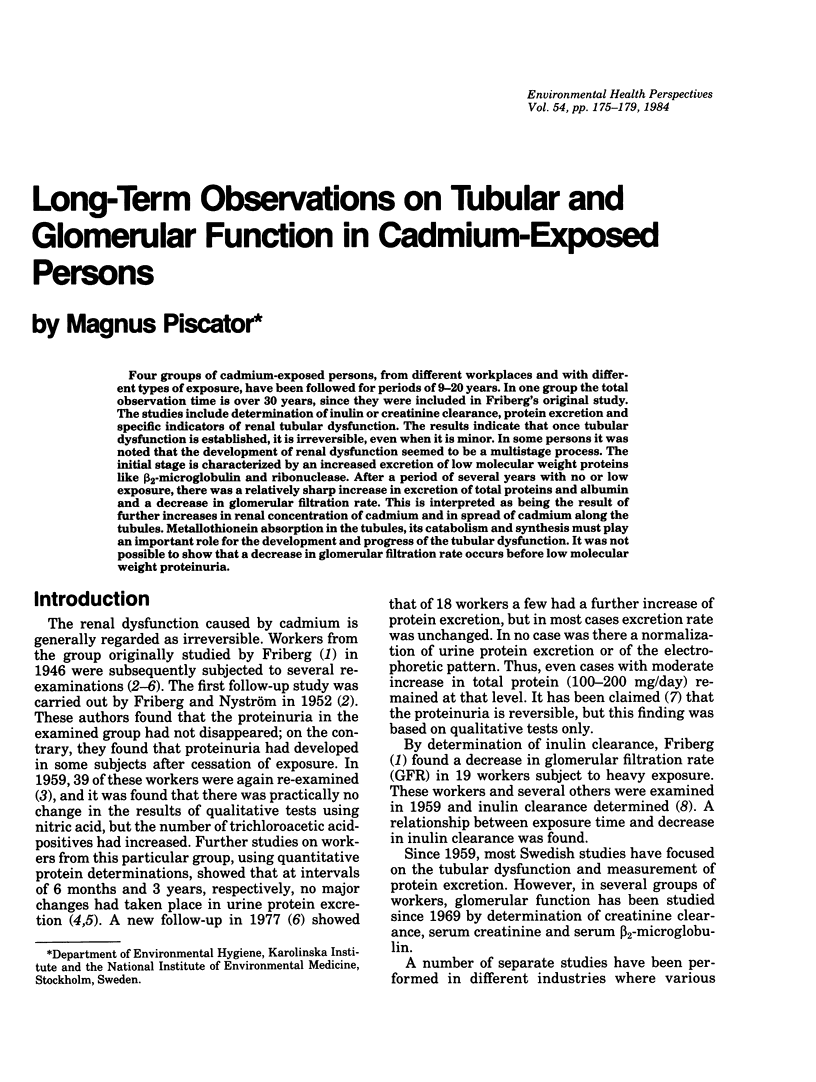
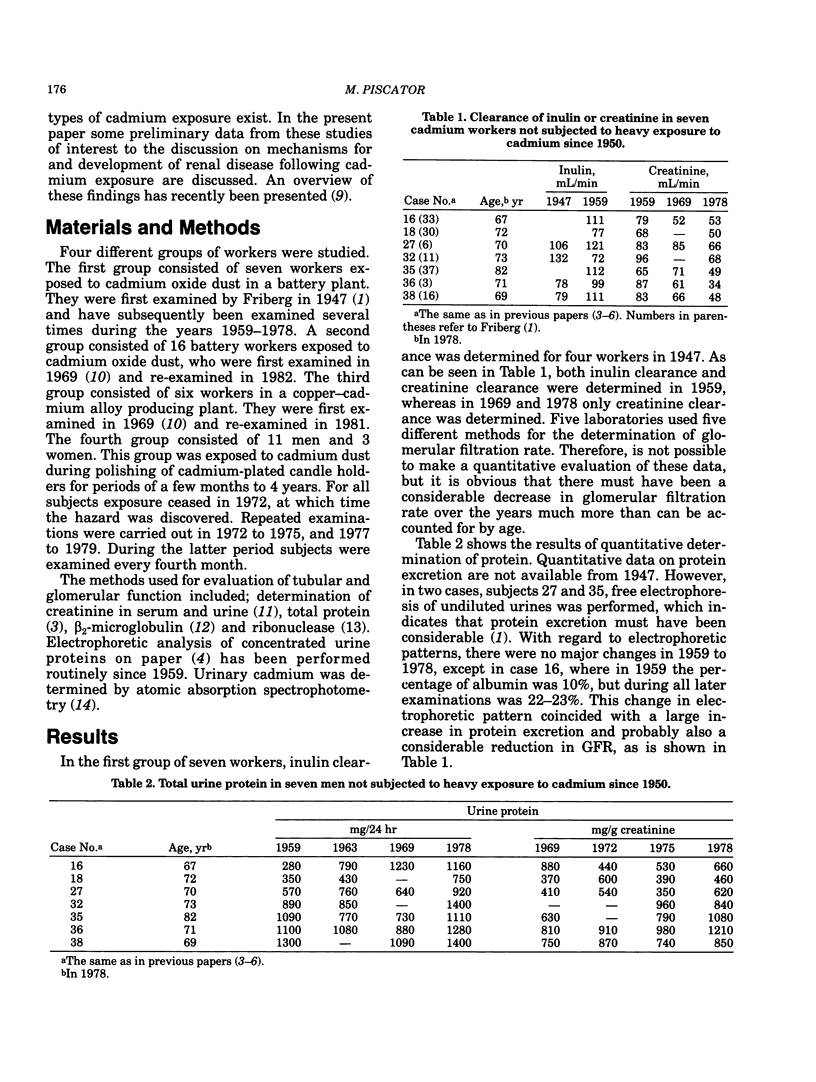
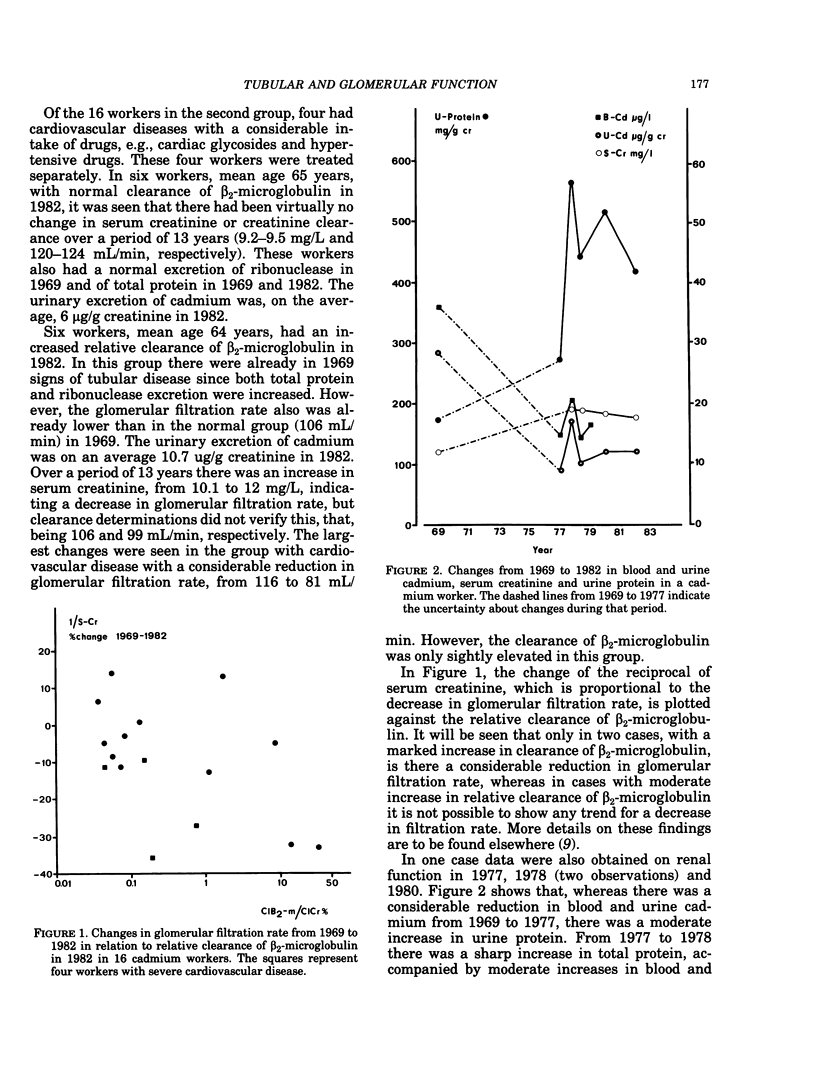
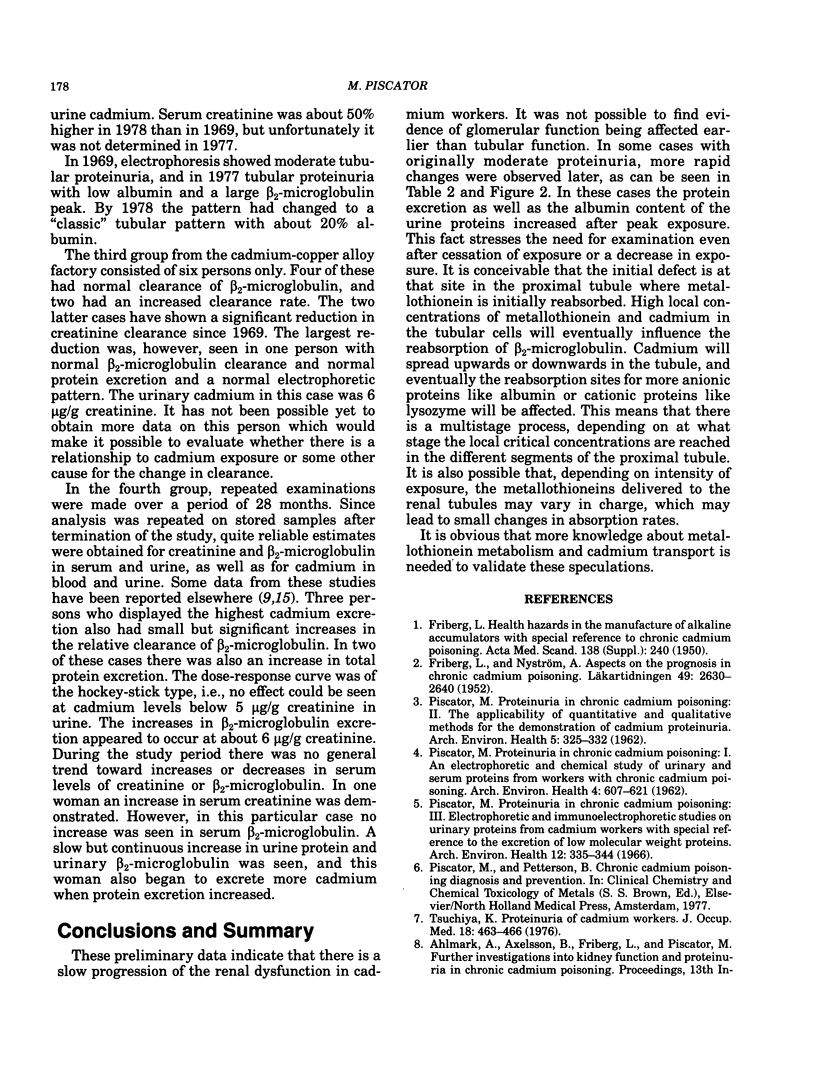
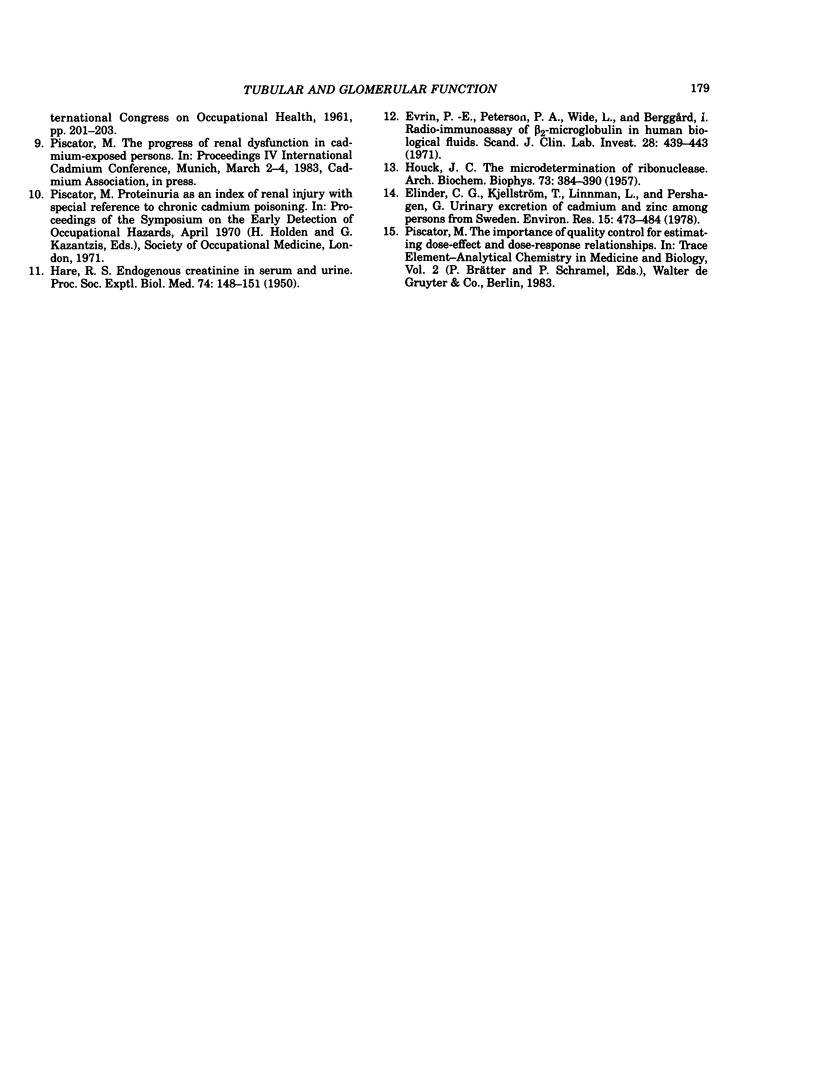
Selected References
These references are in PubMed. This may not be the complete list of references from this article.
- Elinder C. G., Kjellström T., Linnman L., Pershagen G. Urinary excretion of cadmium and zinc among persons from Sweden. Environ Res. 1978 Jun;15(3):473–484. doi: 10.1016/0013-9351(78)90126-3. [DOI] [PubMed] [Google Scholar]
- Evrin P. E., Peterson P. A., Wide L., Berggård I. Radioimmunoassay of 2 -microglobulin in human biological fluids. Scand J Clin Lab Invest. 1971 Dec;28(4):439–443. doi: 10.3109/00365517109095721. [DOI] [PubMed] [Google Scholar]
- HARE R. S. Endogenous creatinine in serum and urine. Proc Soc Exp Biol Med. 1950 May;74(1):148–151. doi: 10.3181/00379727-74-17837. [DOI] [PubMed] [Google Scholar]
- HOUCK J. C. The microdetermination of ribonuclease. Arch Biochem Biophys. 1958 Feb;73(2):384–390. doi: 10.1016/0003-9861(58)90283-2. [DOI] [PubMed] [Google Scholar]
- PISCATOR M. Proteinuria in chronic cadmium poisoning. 1. An electrophoretic and chemical study of urinary and serum proteins from workers with chronic cadmium poisoning. Arch Environ Health. 1962 Jun;4:607–621. doi: 10.1080/00039896.1962.10663220. [DOI] [PubMed] [Google Scholar]
- PISCATOR M. Proteinuria in chronic cadmium poisoning. 2. The applicability of quantitative and qualitative methods of protein determination for the demonstration of cadmium proteinuria. Arch Environ Health. 1962 Oct;5:325–332. doi: 10.1080/00039896.1962.10663290. [DOI] [PubMed] [Google Scholar]
- Piscator M. Proteinuria in chronic cadmium poisoning. 3. Electrophoretic and immunoelectrophoretic studies on urinary proteins from cadmium workers, with special reference to the excretion of low molecular weight proteins. Arch Environ Health. 1966 Mar;12(3):335–344. doi: 10.1080/00039896.1966.10664380. [DOI] [PubMed] [Google Scholar]
- Tsuchiya K. Proteinuria of cadmium workers. J Occup Med. 1976 Jul;18(7):463–466. doi: 10.1097/00043764-197607000-00005. [DOI] [PubMed] [Google Scholar]


